



Bitter Blue sod!

Sod Ordering & Care Instructions
Before You Order
Please ensure the sod type you choose is suitable for your region and specific lawn conditions. Some sod varieties do not perform well in shady areas. While all sod types will grow in full sunlight, the most shade-tolerant option we offer is St. Augustine 'Palmetto'.
🔎 Click on any sod type listed on our website to read a full description and its specific requirements.
Mowing Guidelines
-
If you have St. Augustine or Zoysia grass, do not mow below 5 inches. Cutting it too short can damage the root system and weaken your lawn over time.
Pest & Disease Management
-
All lawns, especially St. Augustine, should be treated for bugs, worms, and diseases within 7 days after installation.
-
These issues are common but manageable with a licensed pest control company.
-
⚠️ Please note: We do not offer pest control services.
Watering Your Sod
Proper watering is crucial to the health of your sod:
-
Under-watering will cause the sod to dry out and die.
-
Over-watering can lead to fungus outbreaks.
-
Please follow the watering instructions provided for your specific sod type.
Soil & Fertilizer Recommendations
-
For best results, apply a layer of topsoil mixed with cow or chicken manure before laying new sod.
-
After installation, apply a starter fertilizer evenly across the sod to boost growth.
-
We offer topsoil and potting soil at competitive prices.
Irrigation Requirements
-
A functioning irrigation system is essential for maintaining a healthy lawn.
-
We do not install irrigation systems, but we can offer temporary watering solutions.
-
If needed, contact us via live chat (bottom right corner of our website).
Sod Delivery Notices
-
Sod must be ordered and delivered separately from other materials. (1 pallet minimum required for delivery)
-
Bundle deals are also delivered separately and are currently limited to Hillsborough, Pinellas, and Pasco counties.
-
All sod orders are prepaid before we can schedule delivery.
-
We accept most major credit cards. No checks accepted.
-
🚫 No refunds or exchanges on sod orders, sod already cut, or sod already delivered.
Note: An additional delivery fee may apply for orders requiring more than one truckload.
Ordering Process
-
Submit your pre-order through our website.
-
We will review and call you to confirm your order.
-
Once confirmed, we will collect payment.
-
Sod delivery will be scheduled after payment is received.
📌 ALL ORDERS ARE PREPAID ONLY.
Grass Types & Sod Care Instructions
Bermuda grass, also called wire-grass or devil grass, are planted throughout Florida primarily on golf courses, athletic fields, tennis courts, bowling greens and high-quality lawns. Bermuda is primarily used in areas where fine-textured, high-quality turf is essential for sports activities and when maintenance budgets are adequate. Bermuda grass produces a vigorous, light to dark green, dense turf that is well adapted to most soils and climates in Florida. Bermuda grass has excellent wear, drought and salt tolerance and is a good choice for oceanfront property. It establishes rapidly and is competitive against weeds and, depending on the cultivar, is available as seed, sod or sprigs. Bermuda grass has a large number of cultural and pest problems which restrict its use in many situations. It is not suitable for most home lawns because of the need for restricted-use pesticides to control nematodes and insects. It also requires the most maintenance for an acceptable appearance of any turf grass.
Floratam grass is an improved St. Augustine grass that was released jointly in 1973 by the University of Florida and Texas A&M University. Floratam is the most widely produced and used St. Augustine grass in Florida. It is a coarse-textured cultivar that has poor cold and shade tolerance relative to other St. Augustine grass cultivars. It does not persist well in environments that receive less than 6 hours of sunlight daily. It grows vigorously in the spring and summer. When first released, it had UF-documented chinch bug resistance, although that has largely been lost over time; chinch bugs are now a major pest of ‘Floratam’. It is also susceptible to gray leaf spot and other diseases. ‘Floratam’ is intolerant of atrazine herbicides when temperatures are above 85°F. It should be mowed 3.5–4 inches.
Palmetto grass was a selection found by a Florida sod grower in 1988 and released in the mid-1990's by Sod Solutions. It is sometimes referred to as a “semi dwarf cultivar” with a shorter growth habit and inter nodes than many other cultivars, but it is slightly larger than the dwarf St. Augustine grass cultivars. It does well in full sun or partial shade, but not in dense shade. It is sometimes referred to as drought tolerant, but research has not shown that it has any greater degree of drought tolerance than other St. Augustine grasses. It is not resistant to insects and sometimes has problems with disease, particularly in Florida’s humid environment. It tends to have a lighter green color than many other cultivars. It should be mowed to a height of 3–4 inches.
Seville grass is a fine-leaved variety with a dark green color and a low growth habit. It is susceptible to chinch bug and web-worm damage. Like the other dwarf cultivars, Seville tends to be prone to thatch. It performs well in both shade and full sun but is cold sensitive. It is also a good choice for shady sites. Seville should be mowed to a height of 2–2.5 inches.
Bahia grass is easily identified by its distinctive “Y-shaped” seed head. It tolerates a wide range of soil conditions and spreads by seeds and rhizomes (a horizontal, modified stem found at or just below ground level). Bahia grass growth is favored by drought, so it is an indicator plant for drought soil conditions. The aggressive nature and drought tolerance of Bahia grass make it ideal for erosion control along roadsides and highway rights of way. However, its aggressive nature also makes it difficult to control as a weed in the landscape.
Zoysia grass grow best during the warm months of spring, summer and early fall. They grow vigorously during this time and become brown and dormant in winter. They are adapted to the entire state and are some of the most cold-tolerant of the warm-season grasses.
These grasses form an excellent turf when properly established and managed. For the best appearance, Zoysia requires cutting with a reel mower, although a rotary mower with sharp blades is satisfactory. They also require occasional watering and periodic thinning or dethatching. Once this grass is established, thatch can build up, especially when heavily fertilized. Remove thatch every two years.
The Zoysia forms a dense, attractive turf in full sun and partial shade, but often thin out in dense shade. Most Zoysia grows very slowly compared to other grasses and usually are established by springing or plugging, although there are seeded types. Sprigs or plugs, 2 inches in diameter planted on 6-inch centers, will cover completely in two growing seasons if watered and fertilized properly. However, it may require several years to cover if not properly maintained. As it is a slow grower, it requires less frequent mowing than some other grasses. It will, however, recover slowly from damage due to its slow growth habit. Emerald Zoysia is a fine-textured hybrid that is possibly the most attractive Zoysia. It is well-suited for top quality lawns where a good maintenance program is provided. Emerald Zoysia has less winter hardiness but more shade tolerance than Meyer. It has a dark green color, a very fine leaf texture, good shade tolerance, high shoot density and a low growth habit. Emerald will develop excess thatch rather quickly if over fertilized and is prone to winter injury northward from the Columbia area.
Classic grass is widely adapted to the warm, humid (subtropical) regions of the world. It is believed to be native to the coastal regions of both the Gulf of Mexico and the Mediterranean. In Florida, St. Classic grass is the most commonly used lawn grass throughout the state. It can grow satisfactorily in a wide variety of soils. Classic grass produces a green to blue-green dense turf that is well adapted to most soils and climatic regions in Florida and to a relatively wide range of soil pH. It has relatively good salt tolerance, and certain varieties have better shade tolerance than other warm-season grass species. Classic grass establishes quickly and easily and may be planted as sod, sprigs or plugs. So if you are looking for an excellent turf choice that has proven itself for years, replace your lawn with Classic grass.
Bitter Blue grass is commonly used for semi- shaded areas and is darker in color. This grass type requires an irrigation system. Bitter Blue grass is widely adapted to the warm, humid (subtropical) regions of the world. It is believed to be native to the coastal regions of both the Gulf of Mexico and the Mediterranean. In Florida. Bitter Blue grass should be mowed 3-4 inches high and also treated for bugs.
ProVista' Saint Augustine is a game-changing, new St. Augustine variety based on the proven genetics of Floratam and developed by Scotts Miracle-Gro with over $100 million and 20 years of research and development behind it. Backed by Scotts, ProVista makes it possible to have beautiful turf with complete weed control and half the mowing. ProVista is the first glyphosate-tolerant turf on the market, allowing you to eliminate costly weeds like Bermuda grass and torpedograss without damaging your ProVista turf. Thanks to its dense, horizontal habit, excellent uniformity and weed-free capability, ProVista makes it possible to cut your mowing in half, delivering valuable savings in time, money and flexibility. ProVista has a deep green color, thrives in full sun and exhibits improved performance in moderate shade. Given its Floratam background, ProVista does not require any special care but delivers exceptional benefits in terms of aesthetics and ease of maintenance.
 |  |  |
|---|---|---|
 |  |  |
 | 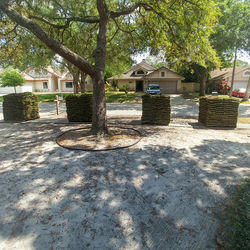 |  |
 |  |  |
 |  | 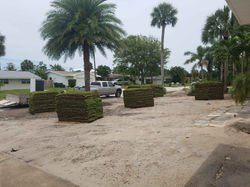 |
 |  | 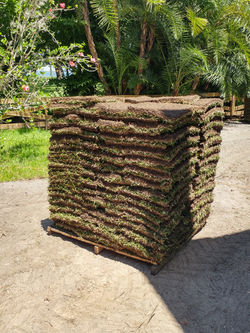 |
 |  | 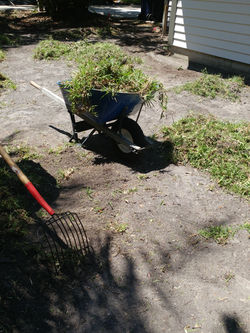 |
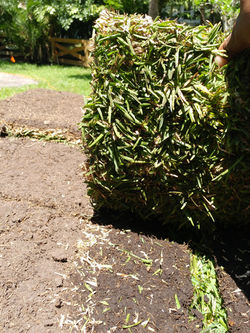 |  |  |
 |  |  |
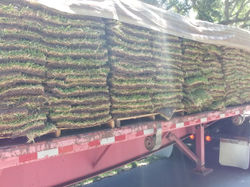 |










